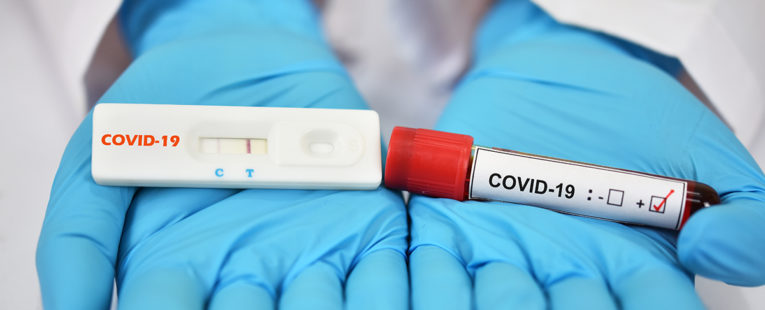
In order to make a down syndrome test, the doctor will have the mother's blood sample analyzed for DNA fragments, which are pieces of DNA that are 25 to 30 base pairs long and match a specific chromosome. The researchers counted each chromosome's gene fragments. Researchers found that Down syndrome patients had more DNA fragments on chromosome 21 than those without the condition.
Screening tests determine the likelihood of Down syndrome in babies.
Screening tests determine the likelihood of a baby being born with Down syndrome. The chance of having Down syndrome babies is 1 in 1000. This means that one out of every 1,000 babies born to a mother will have the condition. 999 babies will be healthy. This is the cutoff level that the National Screening Committee suggests for identifying a woman's risk of having a baby with the disorder.

These screening tests could include a blood test which measures fluid levels, gender, age and smoking status. Based on these results, a computer program calculates the probability that a baby has Down syndrome. Some screening tests can give abnormal results even though they are accurate. Before undergoing any medical procedure, it is important to be aware of the potential risks.
Down syndrome diagnosis tests can tell if a baby is suffering from it.
There are many diagnostic tests that can be used to diagnose Down syndrome. These include ultrasound and blood testing. These tests have higher false-positive rates than other tests that are performed later in the pregnancy. A doctor may recommend an amniocentesis to test for Down syndrome. You can also use the quadruple markers screen to detect neural tube defects as well brain and spinal chord defects. These tests can be performed between fifteen and twenty weeks into pregnancy. Your doctor may request a sample from your amniotic fluid if you are at high risk of developing any birth defects.
Another way to find Down syndrome is through ultrasound screening. To perform this test, a woman needs to place a gel on her abdomen. Then, a small amount is taken from the blood. The ultrasound transducer then sends sound waves through the amniotic fluid, which deflect off the uterine structures. The density of these structures determines the speed at which the sound waves bounce back. The computer will then analyze the information that bounces back and turn it into an image of the fetus.
Screenings are considered to be incontinental.
Screening for Down syndrome is invasive. This is true regardless of whether they are associated with miscarriage risk. Recent research shows that current invasive tests are no better than theoretical NIPD testing. Surprisingly nearly half of all women polled said they would not consent to the tests. Some women may still opt to have these tests, if they believe they are safe from miscarriage.

The screening test for DS is making great progress since the 1980s. However, there are still many areas that need improvement. Today, only 5% to 80% of pregnant women undergo invasive testing. Unfortunately, these tests are associated with significant risks and a high rate of false-positives. In 2008, 400 miscarriages resulted from screening for DS.
FAQ
How can I get my free health insurance?
If you meet the eligibility requirements, you may be eligible for free insurance. You might be eligible if you qualify for Medicaid, Medicare and CHIP.
What are the health services?
A health care provider is a medical institution that offers healthcare services for patients. A hospital is an example. It typically contains many departments such the emergency room, intensive care unit and operating room.
What is "health promotion"?
Health promotion refers to helping people stay healthy and live longer. This promotes health rather than treating existing diseases.
It also includes:
-
Healthy eating
-
Get enough sleep
-
exercising regularly
-
staying active and fit
-
Not to smoke
-
managing stress
-
keeping up with vaccinations
-
Avoiding alcohol abuse
-
Regular screenings and checkups
-
Understanding how to cope with chronic diseases.
What are my options for vaccines?
Vaccines provide a very safe and effective way of keeping you healthy. Vaccines work by protecting you against certain diseases. Vaccinations are given during the adolescence and childhood. Your doctor will discuss when it is best to get vaccinated.
Statistics
- For instance, Chinese hospital charges tend toward 50% for drugs, another major percentage for equipment, and a small percentage for healthcare professional fees. (en.wikipedia.org)
- About 14 percent of Americans have chronic kidney disease. (rasmussen.edu)
- Price Increases, Aging Push Sector To 20 Percent Of Economy". (en.wikipedia.org)
- For the most part, that's true—over 80 percent of patients are over the age of 65. (rasmussen.edu)
- Foreign investment in hospitals—up to 70% ownership- has been encouraged as an incentive for privatization. (en.wikipedia.org)
External Links
How To
What is the Healthcare Industry Value Chain?
The healthcare industry value chains include all the activities involved with providing healthcare services. This includes the business processes within hospitals and clinics and the supply chains that connect them to other providers such as physicians, nurses, pharmacists, insurance companies, manufacturers, wholesalers, and distributors. The end result is a continuum of care that begins with diagnosis and ends with discharge.
There are four components to the value chain:
-
Business Processes - These consist of the tasks performed by individuals throughout the entire process of delivering health care. For example, a doctor may perform an exam and then prescribe medication. Each step must always be done quickly and accurately.
-
Supply Chains – All organizations that ensure the right supplies reach the correct people at the right times. An average hospital has many suppliers. These include pharmacies, lab testing facilities and imaging centers.
-
Networked Organisations - This is a way to coordinate all the entities. Hospitals have many departments. Each has its own number of phones and offices. To ensure that everyone is up to date, every department will have a central point from which employees can access updates.
-
Information Technology Systems - IT plays a critical role in business process efficiency. Without it, things would fall apart quickly. IT also allows you to integrate new technologies in the system. Doctors, for example, can connect to a secure internet connection to access electronic medical records.